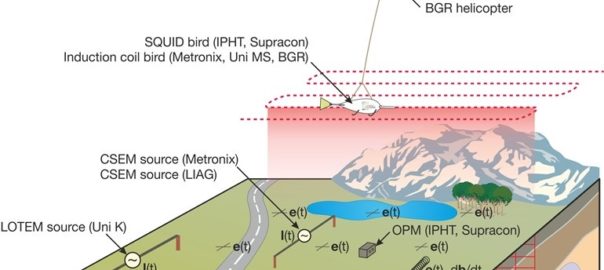LKAB, in tandem with representatives from the University of Münster (Germany) and Luleå University of Technology, LTU (Sweden), recently flew a helicopter-borne survey system, around 90 m above the ground, around its Kiruna area in northern Sweden.
The process works where a helicopter flies past 90 m above the ground with a survey instrument in tow. During a week in October, the helicopter flew in the Luossavaara area near Kurravaaravägen in and around the Varggropen/Nukutus outdoor leisure area and Lake Tuollujärvi.
LKAB said: “The method is unique and was conducted as a research study – one that can help safeguard LKAB’s future.”
The area surveyed was around 40 km², but two weeks preparation was necessary before flying could begin. First, a 2 km cable was laid out in various places in the terrain. Iron digging bars for conducting electrical current into the earth were attached to each end of the cable.
Niklas Juhojuntti, Geophysicist at LKAB, said: “It creates an electromagnetic wave that emits a signal that penetrates the ground. The signal is captured by sensors in the survey instrument suspended beneath the aircraft.”
Based on the aircraft test results, the project group in Germany will put together a 3D model which could reach down to a depth of around 1 km. The survey results will show if there are any electrical conductors, which could indicate the presence of an orebody.
“If this is the case, we will have to drill to find out more precisely what it is. Magnetite is a great conductor,” says Juhojuntti.
LKAB anticipates the results from the aerial survey in January or February 2019 at the earliest. Scientists from LTU will also compile the results from surveys carried out on the surface.
“By piecing together all of the results, we can gain a better picture. From what we’ve seen so far, all the survey data looks good and provided a clear signal,” says Juhojuntti.
LKAB took responsibility for certain parts of the logistics in Kiruna, but the research project paid for the surveys.
“They wanted to demonstrate that there survey methods work, and now they’ve been able to fly in an area where we know mineralisation is present,” Juhojuntti said.
“In Germany, it’s not as easy to find areas like this, and nor is everyone there quite as well disposed toward this method. They were extremely pleased with the Kiruna residents, who left their equipment well alone. They enjoyed a great reception by the people out in the field.”
The results from the flights can help LKAB in its hunt for new orebodies and create a more secure future, the company says.
“I’m hoping this method will allow us to detect any indications concerning unknown major orebodies at depth. We still haven’t done much work at depth north of Nukutus,” Juhojuntti says.






